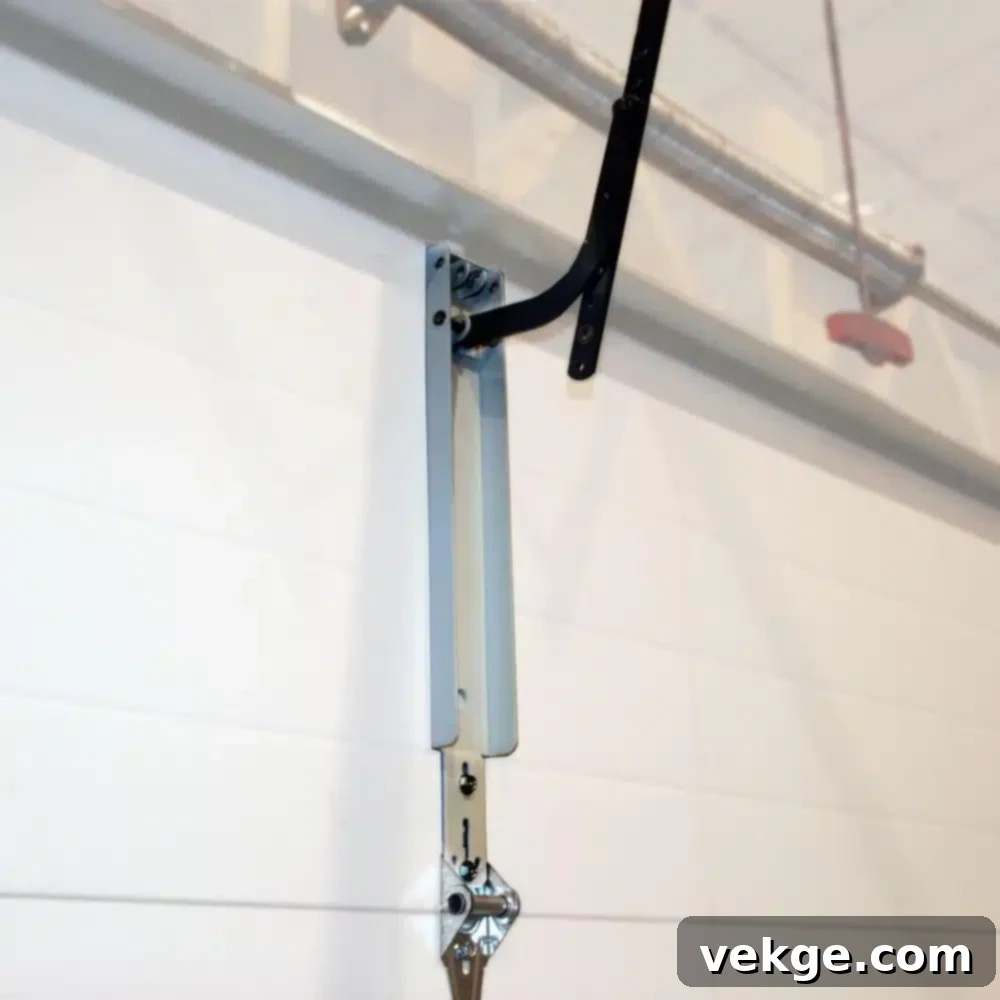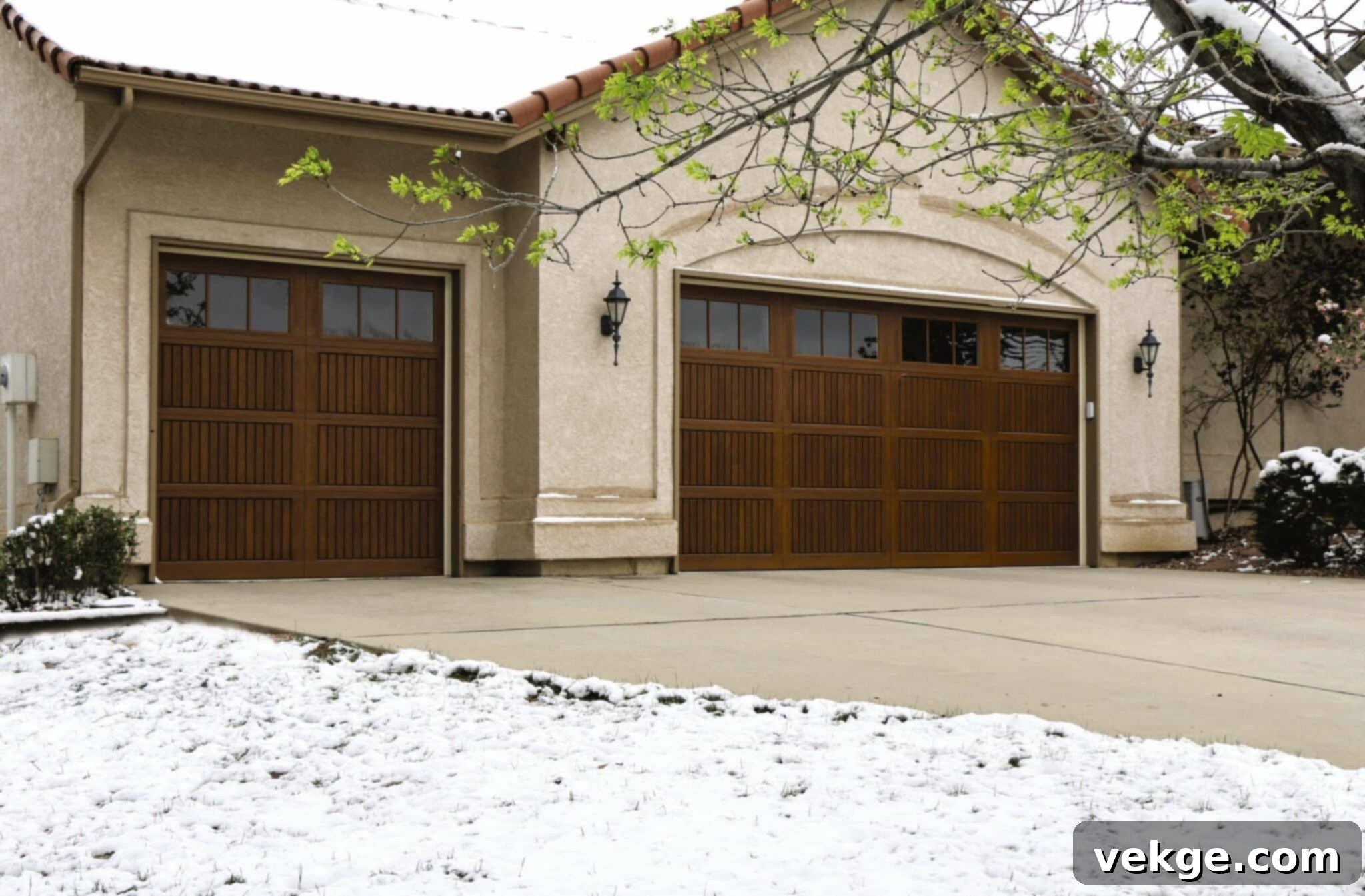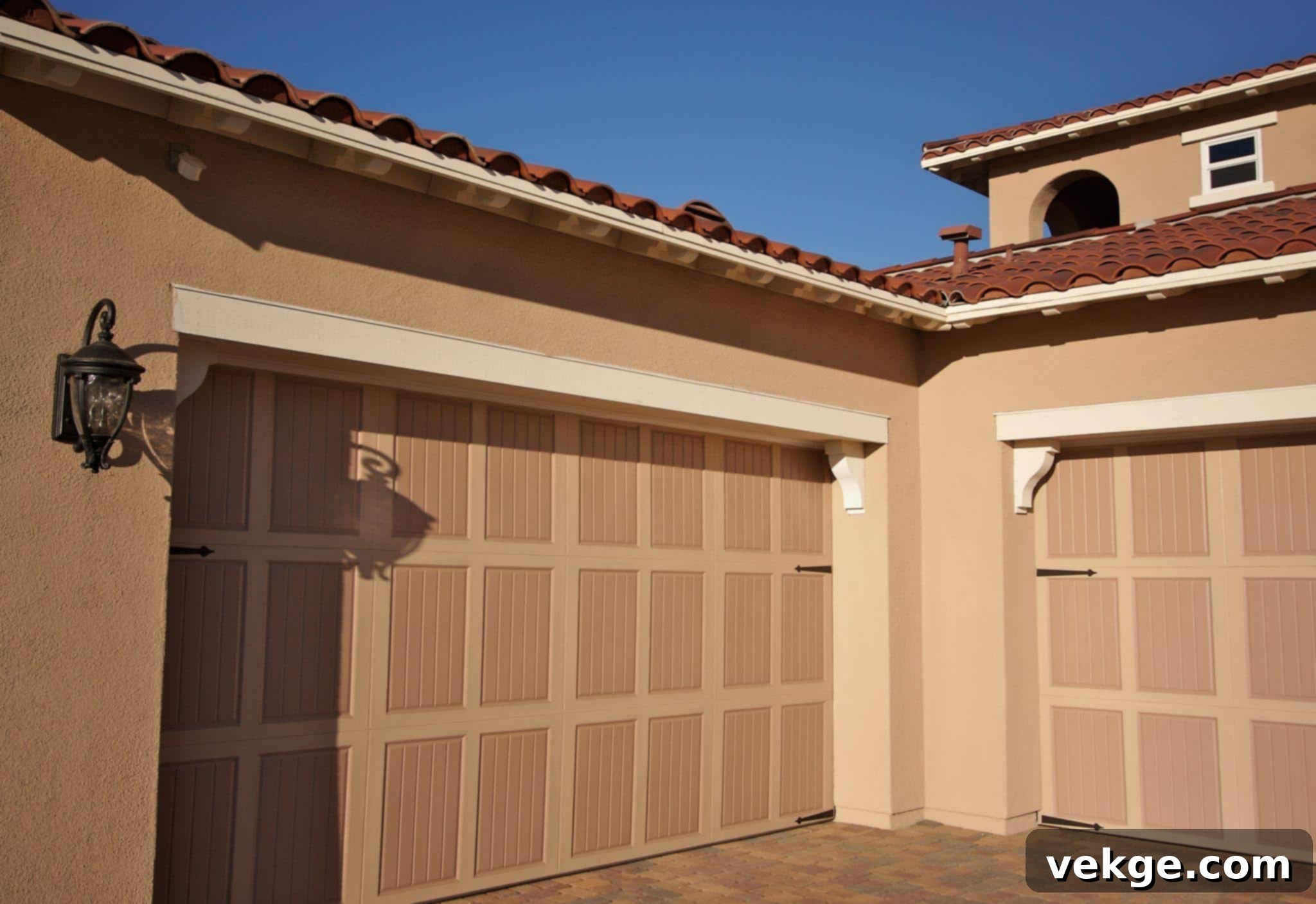Ultimate Guide to Reinforcing Your Garage Door: Enhance Security, Durability, and Weather Resistance
A garage door, often the largest and most frequently used movable section of any home, plays a critical role in both the aesthetic appeal and the overall security of a property. Despite its significant importance, its protection and daily functionality are frequently overlooked by many homeowners. However, a well-maintained and properly reinforced garage door does much more than just open and close; it acts as a robust guardian for your valuable possessions and contributes substantially to your home’s comprehensive security system.
In this in-depth guide, we will explore the essential factors that contribute to your garage door’s longevity and its ability to withstand various threats, from potential intruders to harsh weather conditions. We’ll delve into understanding common vulnerabilities, effective reinforcement strategies, cutting-edge security enhancements, and crucial maintenance practices that ensure your garage door remains a strong, reliable, and secure entry point for years to come.
Understanding the Weaknesses of Your Garage Door
Every garage door, regardless of its material or initial construction quality, possesses inherent weak points that can be compromised over time. These vulnerabilities are primarily affected by a combination of external factors, including ever-changing weather conditions, consistent daily use, and general wear and tear. Key components susceptible to deterioration include the tracks, springs, panels, and the opener system, all of which are absolutely crucial to the door’s seamless and safe operation.
Prolonged exposure to extreme temperatures, such as scorching summers or freezing winters, along with moisture from rain or snow, can accelerate the degradation of these vital components. Furthermore, physical impact, whether accidental or intentional, can also lead to significant damage. Over time, such exposure and impact can cause metal parts to rust, wooden components to warp, and electrical systems to malfunction, culminating in potential operational issues, increased security risks, and costly repairs.
According to the seasoned experts at Garage Door Repair Calgary, proactive measures are key. They emphasize that regular inspections and timely, preventive maintenance are invaluable for identifying these weaknesses early on. Addressing minor issues before they escalate can prevent major breakdowns, extend the lifespan of your entire garage door system, and ultimately save you a significant amount of money and hassle in the long run.
The Most Important Ways for Reinforcement

Professional garage door technicians consistently highlight reinforcement as a foundational step in significantly enhancing your home’s security. They advocate for proper reinforcement as the initial and most crucial action when addressing any potential security vulnerabilities, ensuring enduring protection and superior durability for your garage door system. These specialists possess the expertise to not only pinpoint existing weak spots but also to anticipate future risks, allowing them to recommend and implement the most effective and tailored solutions for your specific needs.
Strengthening the Track System
The track system is absolutely fundamental to your garage door’s structural integrity and smooth operation. It guides the door panels as they move up and down, and any compromise here can lead to the door jamming, coming off its tracks, or even collapsing. A common and highly effective reinforcement method involves adding supplementary sets of heavy-duty brackets every few feet along the existing tracks. This simple yet powerful upgrade drastically reduces the chances of the track being pried apart by strong winds during a storm or deliberately forced open by someone attempting to gain unauthorized entry into your home. Unlike standard brackets, heavy-duty alternatives are designed to withstand greater stress and impact, providing a crucial layer of stability and protection.
Panel Reinforcement and Material Considerations
Modern garage doors are constructed from a diverse range of materials, each requiring specific reinforcement strategies to maximize their strength and longevity. Understanding these material-specific needs is vital for effective protection.
Reinforcing Steel Garage Door Panels
Steel garage doors are popular for their strength and low maintenance. However, wider steel panels can be susceptible to bowing or flexing, especially under pressure from wind or impact. To counteract this, installing horizontal struts across the width of the panels is an excellent reinforcement option. These sturdy metal bars are typically bolted or riveted to the interior face of each panel, providing additional rigidity. This not only prevents bowing but also significantly enhances the door’s resistance to forced entry, making it much harder for an intruder to create an opening.
Protecting Wooden Garage Door Panels
Wooden garage doors offer timeless beauty and natural insulation, but they are prone to issues like warping, rotting, and insect damage if not properly cared for. Reinforcement for wooden doors often involves a multi-pronged approach: internal braces can be added to strengthen the structural integrity of the panels, preventing them from twisting or bending over time. Equally important are weatherproof coatings, such as high-quality paints, stains, or sealants. These create a protective barrier against moisture, UV radiation, and pests, significantly extending the life and maintaining the aesthetic appeal of the wooden door.
The Importance of Anti-Sag Cables
A frequently overlooked yet highly effective panel reinforcement technique involves the installation of anti-sag cables. These cables are typically installed diagonally across the back of wider garage door panels. Over time, especially with larger and heavier doors, panels can begin to sag in the middle duecompromising the door’s appearance and functionality, and potentially creating gaps. Anti-sag cables exert tension that counteracts this downward pull, maintaining the panel’s original shape and preventing common issues like uneven closing or increased stress on the opener system.
Security Enhancement Measures
Beyond structural integrity, bolstering your garage door’s security features is paramount for safeguarding your home. The garage is often a prime target for intruders due to its perceived vulnerability and the valuable items frequently stored within.
Implementing a Robust Deadbolt System
One of the most effective security enhancements is the installation of a robust deadbolt system. Unlike the integrated locking mechanism often found in the opener, a separate deadbolt offers an independent layer of security. This type of lock typically consists of a solid bolt that extends deep into the door frame, making it incredibly difficult to force open. A manual deadbolt, activated from the inside, provides an additional physical barrier that can’t be bypassed by remote control signal manipulation. For maximum security, look for deadbolts that are specifically designed for garage doors and offer pick-resistance.
Leveraging Modern Rolling Code Technology
In today’s digital age, relying solely on older, fixed-code opener systems is a significant security risk. Modern garage door openers incorporate sophisticated rolling code technology. This advanced feature generates a new, unique access code every single time you use your remote. This means that even if a third-party stealing device attempts to “capture” or “scan” your opener’s signal, the code it obtains will be immediately obsolete and unusable for future attempts. This constant randomization provides a powerful defense against code-grabbing technologies, drastically reducing the chances of unauthorized access.
Exploring Smart Garage Door Security Features
Beyond deadbolts and rolling codes, smart home technology offers even more advanced security for your garage. Consider integrating features such as:
- Smart Garage Door Openers: These allow you to monitor and control your garage door from anywhere using your smartphone, providing notifications if the door is left open or opened unexpectedly.
- Security Cameras: Installing surveillance cameras, especially smart ones with motion detection and two-way audio, inside or outside your garage can deter criminals and provide valuable evidence if an incident occurs.
- Entry Sensors: Sensors can alert you if the garage door or an access door to the garage is opened without authorization.
- Integrated Alarm Systems: Connecting your garage door system to your home’s main alarm system ensures comprehensive protection.
Weather Resistance Improvements

Weather resistance is intrinsically linked to both the durability and security of your garage door. A well-sealed garage door not only protects against the elements but also contributes to energy efficiency and a more secure barrier against intruders.
Effective Weatherstripping and Seals
High-quality weatherstripping around the perimeter of your garage door is crucial. It acts as a barrier, preventing water intrusion from rain or melting snow, and significantly reduces air drafts. This, in turn, helps to maintain a more consistent temperature inside your garage, lowering heating and cooling costs. Furthermore, effective weatherstripping minimizes the pressure differences caused by strong winds, which can otherwise strain the door’s components and even allow wind-driven debris to enter. Quality seals at the bottom of the door are equally important, serving a dual purpose: they not only create a tight barrier against water, leaves, and pests but also help keep the door in perfect alignment throughout its opening and closing operations, reducing wear on other parts.
Considering Garage Door Insulation
For even greater weather resistance and energy efficiency, consider adding insulation to your garage door panels. Insulated doors offer an extra layer of protection against temperature extremes, making your garage a more comfortable space and reducing heat transfer between your garage and the outdoors. This is particularly beneficial if your garage is attached to your home or if you use it as a workshop or living space. Insulation also adds a degree of sound dampening and can make the door feel more robust.
Maintenance Considerations for Long-Term Performance
Regular maintenance is the cornerstone of ensuring your garage door remains functional, secure, and durable. Neglecting routine upkeep can lead to a cascade of problems that compromise its operation and safety.
A Comprehensive Maintenance Checklist:
- Lubrication: Regularly lubricate all moving parts, including hinges, rollers, and springs, with a silicone-based or lithium-based garage door lubricant. This reduces friction, prevents rust, and ensures smooth, quiet operation.
- Tighten Hardware: Over time, the constant movement of the garage door can loosen nuts, bolts, and screws. Periodically inspect and tighten all hardware, especially the brackets holding the tracks.
- Inspect Components: Visually inspect springs, cables, rollers, and tracks for any signs of wear, rust, or damage. Look for frayed cables, cracked rollers, or bent tracks. Addressing these issues early can prevent more significant problems.
- Balance Test: Disengage the opener and manually lift the door halfway. If it doesn’t stay in place or drifts up or down, the springs are out of balance and require professional adjustment.
- Safety Reversal Test: Place a solid object (like a 2×4) flat on the floor in the door’s path. Close the door; it should reverse upon contact. Test the photo-eye sensors by waving your foot in front of one while the door is closing; it should stop and reverse. If these safety features fail, professional service is immediately required.
Proactive maintenance prevents minor issues from quickly escalating into major repairs, such as having to replace entire door sections or critical components. Furthermore, it prevents the door from becoming so misaligned that it poses a safety hazard or ceases to function correctly altogether.
Impact on Operation and Performance
While reinforcement is crucial, it’s essential to understand that adding material to your garage door can have a significant impact on its operation and performance. An improperly executed reinforcement can inadvertently create new problems, affecting the door’s functionality and potentially compromising its safety.
The Weight Factor and Spring Calibration
A very thick or heavy reinforcement material will inevitably add excessive weight to the garage door. This additional weight, if not accounted for, can cause the door to operate sluggishly, struggle to open fully, or even fail to close properly. More critically, the existing torsion or extension springs, which are carefully calibrated to the original weight of the door, will no longer be adequate. This imbalance places immense strain on the opener motor and can lead to premature wear and tear on all moving parts. To compensate for the added weight, it may necessitate replacing the standard-sized springs with much thicker, stronger springs capable of handling the new load. These heavier springs, in turn, may require a more powerful, electrically powered motor to operate the door safely and efficiently.
The Importance of Professional Expertise
This is where the expertise of experienced door maintenance technicians becomes indispensable. They possess the technical knowledge and specialized tools to accurately assess the impact of reinforcement on your door’s balance and performance. Professionals can calculate the precise spring requirements, perform expert spring replacement, and ensure that the opener system is correctly calibrated to handle the new weight. Their meticulous attention to detail ensures that the door works without any obstacles, operates smoothly, and, most importantly, remains completely safe and reliable at all times, preventing potential accidents or further damage caused by DIY miscalculations.
Choosing Between DIY and Professional Reinforcement
Reinforcing your garage door is a multifaceted operation, with individual issues requiring a variety of solutions, from selecting the right materials to integrating advanced security systems. Some basic reinforcement projects, such as adding simple weatherstripping or tightening hardware, might be suitable for a skilled do-it-yourselfer. However, more complex tasks, like installing heavy-duty track brackets, adding internal panel bracing, replacing springs, or integrating advanced security systems, are best left to a seasoned expert. Attempting complex repairs or modifications without the necessary experience and tools can lead to improper installation, further damage, safety hazards, and potentially voiding your door’s warranty.
To Conclude
Ultimately, the main objective is to find a comprehensive reinforcement solution that effectively balances enhanced security, optimal functionality, reasonable cost, and strict compliance with local building codes and manufacturer recommendations. By understanding the vulnerabilities of your garage door and implementing appropriate reinforcement strategies – from strengthening tracks and panels to upgrading security features and ensuring proper weather resistance – you are making a significant investment in your home’s safety and longevity.
Reinforcing your garage door will not only secure your valuable belongings but also provide you with invaluable peace of mind. Knowing that this crucial entry point to your home is well-protected, maintained, and resilient against both intruders and the elements allows you to rest easy, confident in the security and durability of your property. Don’t underestimate the power of a strong, well-maintained garage door; it’s an essential component of a truly secure home.
